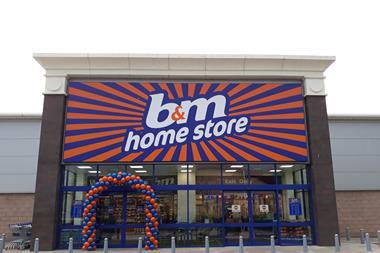
Innovation is critical for today’s consumer brands.
E-commerce is expected to capture 41% of global retail sales by 2027. To tap that market opportunity, every brand – from food to fashion and CPG to furniture – has to ensure they are engaging consumers at every digital touchpoint with visual content that is on brand, on product, and highly engaging.
Think of how essential video has become, or how much added value is created by personalisation and AR. As macroeconomic pressures put greater scrutiny on costs, innovating the way content is created and distributed is critical if brands want to deliver more, faster, better and for less.
Many household brands and retailers are already recognising this. The global visualisation and 3D rendering software market is projected to be worth $6.3bn in 2026, up from $2.9bn in 2022.
Yet 65% of brands are struggling with the complexities of their content production workflows, indicating a significant barrier to growth.
There is, therefore, a pressing need to innovate how brand and product content is produced to create large quantities of high-quality product images, videos, and personalised experiences that are fit for an omnichannel audience.
Automated, AI-driven, real-time content workflows that utilise templatised ingestion of product data and creative guidelines can dramatically expedite creation and deployment of visual content. Happy Finish data shows significant efficiency savings of well over 45% compared to traditional content pipelines.
End-to-end digital asset pipelines offer compelling new ways to make digital product twins work harder, providing utility and speed of deployment across a wider range of touchpoints and channels.
This virtualisation of product development and visual asset production can drastically reduce time to market, driving sustainability and consistency across the ever-expanding channel mix, while enriching storytelling capabilities.
One of the biggest factors getting in the way of this holistic, end-to-end approach to producing visual content is a tendency towards siloed thinking within brands. All too often innovation, product and content teams sit separately from e-commerce, marketing, in-store or digital, creating inefficiencies and missed opportunities.
Without doubt, silos are an organisational byproduct, especially in larger businesses. And, for the most part, they exist for good reasons. But to address the great content challenge, brands must create a dynamic and collaborative innovation ecosystem, and foster holistic, end-to-end thinking right across internal verticals.
Addressing this means a cultural and organisational shift. Many older, established brands are structured in a way that impedes innovation, while their smaller, more agile competitors can quickly adopt new technologies and workflows.
To get around this, larger organisations can establish agile innovation teams that operate like internal startups and drive experimentation and adoption. Situating innovation teams horizontally across departments, like buying, product creation, e-commerce, digital, in-store and marketing, facilitates better cross-pollination.
But that alone is not enough. To truly accelerate the adoption of innovative practices – such as automated content creation pipelines – internal incentives and rewards must be put in place to motivate stakeholders to embrace change and proactively collaborate.
When it comes to supercharging digital asset and content workflows, brands and retailers must aim for a holistic approach, combining fleet-footed internal innovation with external expertise to accelerate the process and take advantage of fast-changing tools and platforms.
Think of this as an innovation marathon made up of sprints. The gains and rewards along the way are significant.



















No comments yet